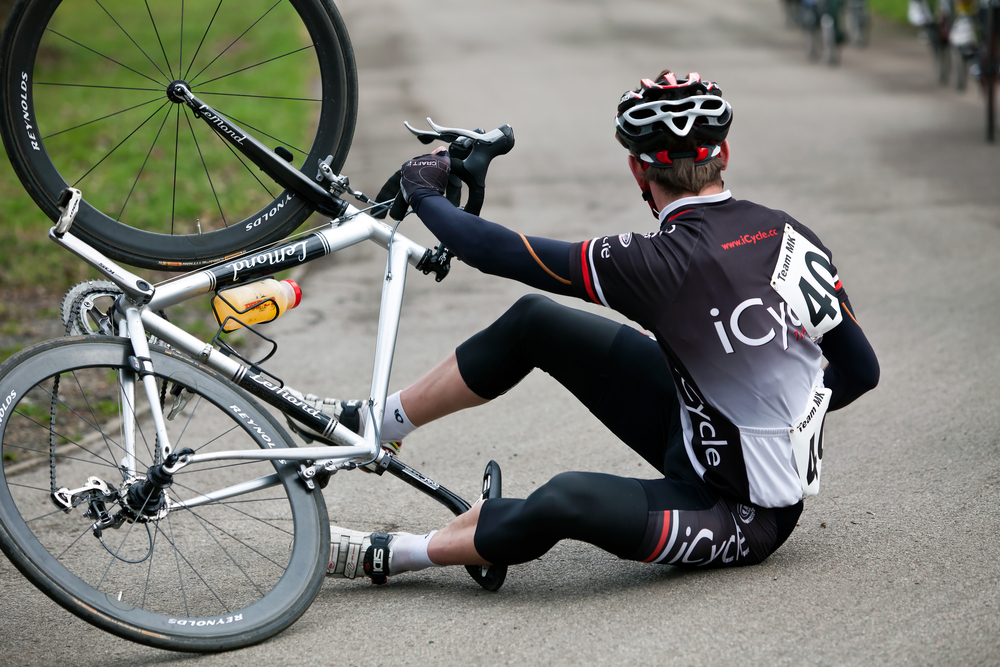Don't put away your bike after breaking your clavicle
Apparently, you're not a real cyclist unless you've broken your collarbone. That's what a patient of mine told me a few weeks ago when she came in to see me about her injury. I commended her for looking on the bright side. At least her painful fracture means she's officially joined this not-so-exclusive club of "real cyclists."
I can always tell when it's the cycling road-race season. We're more than halfway through the major races now, with the Giro d'Italia and the Tour de France behind us and the Tour of Spain still to come. This is the time of year when cycling enthusiasts are out in full force and I tend to see a lot of clavicle (collarbone) fractures, one of the most common injuries in cycling, second only to skin abrasions.

If you were following the Tour de France this year, you will no doubt remember that the nastiest crash of the race involved a Frenchman, Jean-Christophe Peraud. He broke his collarbone in a morning time trial, yet continued to race that day only to skid and crash at 50 mph, landing on his same shoulder. Not surprisingly, this took him out of the race.
A midshaft collarbone fracture is a common injury, accounting for 5 percent of all fractures and representing 35 to 45 percent of all shoulder girdle injuries. The injury happens most often when you fall and land with your arms outstretched, or in the case of cycling or skiing, when you fall and land on your shoulder. The force of the fall is transmitted up the arm or through the shoulder to the clavicle, which is one of the body's most vulnerable bones. You can actually see and feel it since it's not covered in fat and muscle like the rest of our bones.
While elite cyclists, with prize money and international rankings at stake, get straight back onto their bikes with broken clavicles, the rest of us tend to be more sensible in our approach to healing. My patient had the misfortune of breaking her collarbone particularly badly. She had fallen headfirst over her handlebars and her right clavicle was fractured in three places. She didn't need an X-ray to know it was broken. She could look in the mirror and see a big bump sticking out. She had two questions for me: "Can you get rid of that bump?" and "When can I get back on my bike?"
I told her the clavicle is challenging to repair since we cannot place it in a cast during the healing process. In a less serious fracture, where the bones don't overlap (less than 1.5 centimeters), the collarbone will usually heal well by itself. We treat those fractures with sling support and gentle range-of-motion exercises. However, if we left her displaced clavicle to heal this way, she would have a bumpy, shorter shoulder and most likely permanent shoulder weakness. Pointing at her X-rays, I explained that we'd need to surgically repair the clavicle and get it back out to full length. I saw her face fall. I guessed, correctly, that she had visions of open surgery with metal plates and screws and a huge scar the length of her collarbone (she told me that cyclist friends of hers have had this done). Thankfully, I could reassure her that surgery is improving all the time and there is now a way to do this without using these plates and screws.
Collarbone Repair
We use what's called an intramedullary fixation technique, where we are able to pass a screw down the bore of the clavicle in order to straighten it out and permit it to heal. It's a minimally invasive procedure, which will get her back on her bike in days rather than months. "And the bump?" she asked. The surgery will take care of that, too. She was happy. She'll be a "real cyclist" with a stable shoulder, no bump and a small scar.
